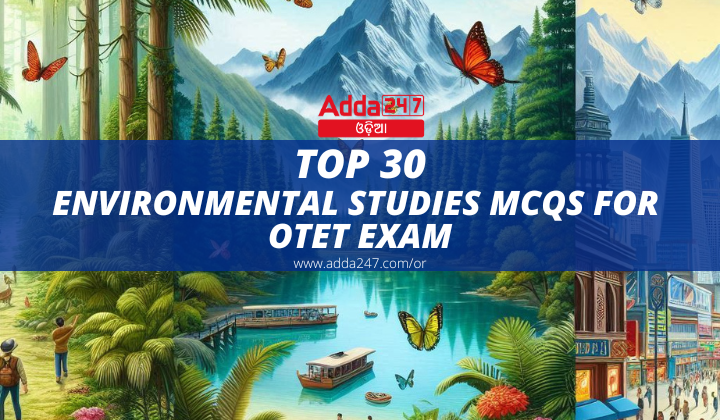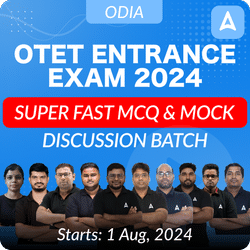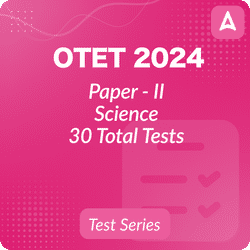The top 30 Environmental Studies MCQs for the OTET exam are tailored to help aspiring teachers grasp essential environmental concepts and issues. These questions delve into topics such as biodiversity, conservation, pollution, climate change, and sustainable development. By focusing on both theoretical knowledge and practical applications, this set of MCQs aims to equip candidates with a comprehensive understanding of environmental science, crucial for educating future generations. The carefully curated questions ensure that candidates are well-prepared to tackle the environmental studies section of the OTET exam with confidence and proficiency.
Top 30 Environmental Studies MCQS For OTET Exam
- Which technique involves students reflecting on their learning process in EVS?
(a) Summative assessment
(b) Formative assessment
(c) Self-assessment
(d) Peer assessment
Ans: (c) Self-assessment - What is the role of formative assessment in EVS?
(a) To evaluate final knowledge
(b) To monitor ongoing learning progress
(c) To administer standardized tests
(d) To assign final grades
Ans: (b) To monitor ongoing learning progress - Which tool is best suited for evaluating students’ ability to conduct surveys in EVS?
(a) Rubric
(b) True/false quiz
(c) Matching questions
(d) Multiple-choice test
Ans: (a) Rubric - How can teachers use diagnostic assessment results in EVS?
(a) To ignore learning gaps
(b) To plan targeted interventions
(c) To assign random tasks
(d) To finalize report cards
Ans: (b) To plan targeted interventions - What is a common method for assessing students’ observation skills in EVS?
(a) Multiple-choice questions
(b) Practical demonstrations
(c) Oral presentations
(d) Written essays
Ans: (b) Practical demonstrations - Which technique involves students assessing each other’s work in EVS?
(a) Teacher assessment
(b) Summative assessment
(c) Peer assessment
(d) Standardized testing
Ans: (c) Peer assessment - What is the benefit of using diverse assessment tools in EVS?
(a) To focus solely on memorization
(b) To address different learning styles
(c) To increase test anxiety
(d) To simplify grading
Ans: (b) To address different learning styles - How does formative assessment benefit EVS teaching?
(a) By providing immediate feedback
(b) By focusing only on final exams
(c) By ranking students
(d) By maintaining uniform assessment methods
Ans: (a) By providing immediate feedback - What is a key feature of summative assessment in EVS?
(a) Ongoing feedback
(b) Final evaluation of student learning
(c) Peer review
(d) Informal assessment
Ans: (b) Final evaluation of student learning - Which technique can be used for self-assessment in EVS?
(a) Reflective journals
(b) Multiple-choice tests
(c) True/false quizzes
(d) Standardized tests
Ans: (a) Reflective journals - Which method is effective for diagnosing learning difficulties in EVS?
(a) Summative assessment
(b) Diagnostic interviews
(c) Final exams
(d) Lecture notes
Ans: (b) Diagnostic interviews - Which mineral is abundantly found in Odisha?
(a) Gold
(b) Bauxite
(c) Mica
(d) Limestone
Ans: (b) Bauxite - What is the primary source of irrigation in Odisha?
(a) Canals
(b) Wells
(c) Rivers
(d) Rainwater harvesting
Ans: (a) Canals - Which region in India is known for its rich biodiversity and dense forests?
(a) Western Ghats
(b) Thar Desert
(c) Indo-Gangetic Plain
(d) Deccan Plateau
Ans: (a) Western Ghats - Which crop is the staple food of Odisha?
(a) Wheat
(b) Rice
(c) Maize
(d) Barley
Ans: (b) Rice - Which sector is the largest employer in Odisha?
(a) Agriculture
(b) Industry
(c) Services
(d) IT
Ans: (a) Agriculture - Which industry is significant in Odisha due to its mineral resources?
(a) Textile industry
(b) Automobile industry
(c) Steel industry
(d) Information technology
Ans: (c) Steel industry - What is the main cash crop of Odisha?
(a) Sugarcane
(b) Cotton
(c) Jute
(d) Tea
Ans: (c) Jute - Which is the primary industrial region in Odisha?
(a) Bhubaneswar
(b) Rourkela
(c) Cuttack
(d) Puri
Ans: (b) Rourkela - Who is known as the “Father of the Indian National Movement”?
(a) Jawaharlal Nehru
(b) Bal Gangadhar Tilak
(c) Mahatma Gandhi
(d) Subhas Chandra Bose
Ans: (c) Mahatma Gandhi - Which movement in Odisha was led by Gopabandhu Das?
(a) Non-cooperation Movement
(b) Salt Satyagraha
(c) Quit India Movement
(d) Civil Disobedience Movement
Ans: (a) Non-cooperation Movement - Who was the prominent leader of the Quit India Movement in Odisha?
(a) Jayaprakash Narayan
(b) Laxman Naik
(c) Vinoba Bhave
(d) Jatin Das
Ans: (b) Laxman Naik - What was the main objective of the Swadeshi Movement?
(a) Boycott of foreign goods
(b) Armed struggle
(c) Promotion of English education
(d) Formation of political parties
Ans: (a) Boycott of foreign goods - Which disease is caused by a deficiency of Vitamin C?
(a) Rickets
(b) Scurvy
(c) Beriberi
(d) Pellagra
Ans: (b) Scurvy - What is the main component of a balanced diet?
(a) Carbohydrates only
(b) Proteins only
(c) Vitamins and minerals only
(d) A mix of carbohydrates, proteins, fats, vitamins, and minerals
Ans: (d) A mix of carbohydrates, proteins, fats, vitamins, and minerals - What is the primary cause of air pollution in urban areas?
(a) Agricultural activities
(b) Industrial emissions
(c) Deforestation
(d) Mining
Ans: (b) Industrial emissions - Which property of matter measures the amount of space it occupies?
(a) Mass
(b) Volume
(c) Density
(d) Weight
Ans: (b) Volume - What is the force that attracts objects towards the center of the Earth?
(a) Magnetism
(b) Friction
(c) Gravity
(d) Buoyancy
Ans: (c) Gravity - What causes malaria in humans?
(a) Bacteria
(b) Virus
(c) Protozoa
(d) Fungus
Ans: (c) Protozoa - Which virus causes COVID-19?
(a) Influenza virus
(b) SARS-CoV-2 virus
(c) HIV virus
(d) Ebola virus
Ans: (b) SARS-CoV-2 virus - Which disease is caused by the human immunodeficiency virus (HIV)?
(a) Tuberculosis
(b) Hepatitis A
(c) AIDS
(d) Malaria
Ans: (c) AIDS (Acquired Immunodeficiency Syndrome) - What is a serious blood infection caused by bacteria entering the bloodstream?
(a) Septicaemia
(b) Malaria
(c) Dengue fever
(d) Influenza
Ans: (a) Septicaemia - What condition occurs when the body damages its own tissues in response to a severe infection?
(a) Sepsis
(b) Tuberculosis
(c) Pneumonia
(d) Cholera
Ans: (a) Sepsis - Which of the following human organs is responsible for alcohol detoxification?
(a) Lung
(b) Liver
(c) Kidney
(d) Intestines
Ans: (b) Liver.










